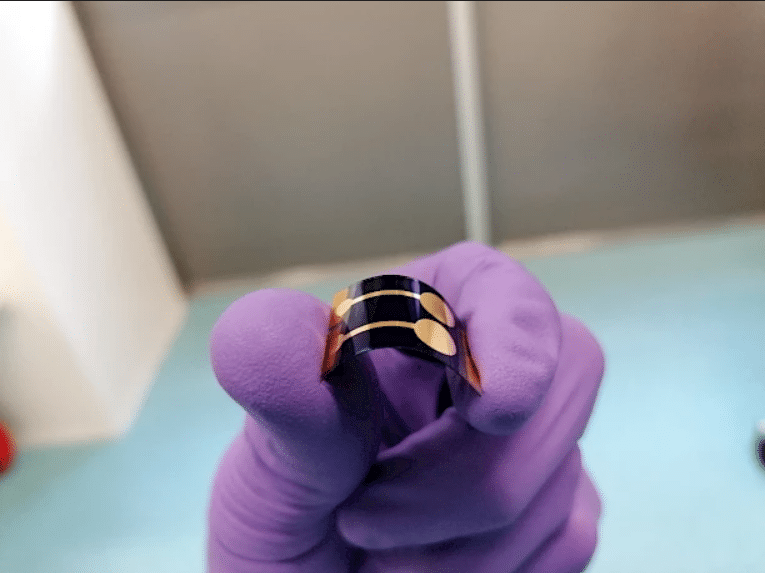Researchers at France's National Solar Energy Institute (INES) – an arm of the French Alternative Energies and Atomic Energy Commission (CEA) –have developed a perovskite solar cell on a flexible substrate with an efficiency of 19.2%.
The scientists explained that the same cell had achieved an efficiency of 20.2% for a cell with a size of 11cm2 based on a rigid glass substrate and that the cell technology was transposed onto a flexible substrate by adapting the thickness of the active layer to the optical specificities of the substrate made of indium tin oxide (ITO) and polyethylene terephthalate (PET).
The flexible single-junction solar cell has an area of 0.33cm² and is built with a double layer of cesium and formamidinium, which the researchers said offers promising stability results compared to technologies using a methylammonium type cation, which is more thermally unstable.
The cell was tested through a damp heat test, which is an accelerated environmental aging test that determines the ability of a PV device to withstand long-term exposure to high temperature and penetration of humidity. It showed that the perovskite cell can retain around 90% of its initial efficiency after 800 hours.
Popular content
The scientists specified that the achieved conversion efficiency is not the highest for this perovskite cell technology, which in previous research has reached up to 21%, although with smaller cell surfaces, but they stated it is the first time a very strong performance has been obtained with a low-cost substrate such as PET. “Our technology combines simplicity and performance,” they affirmed.
The cell is being developed under the EU-funded Apolo research project. CEA-INES and other partners are working on advanced materials, from cell to encapsulant, to develop flexible, fully printable perovskite cells with an efficiency of at least 22% and 80% of initial performance after relevant accelerated-test standards.
This content is protected by copyright and may not be reused. If you want to cooperate with us and would like to reuse some of our content, please contact: editors@pv-magazine.com.



Have they tested the device at damp heat for 800 hours and obsereved a 90% retention, or is the 800 hours figure the extrapolated period under normal operating conditions? If the former, how does this correspond to rates of performance degredation at various operating humidity and temperature profiles?